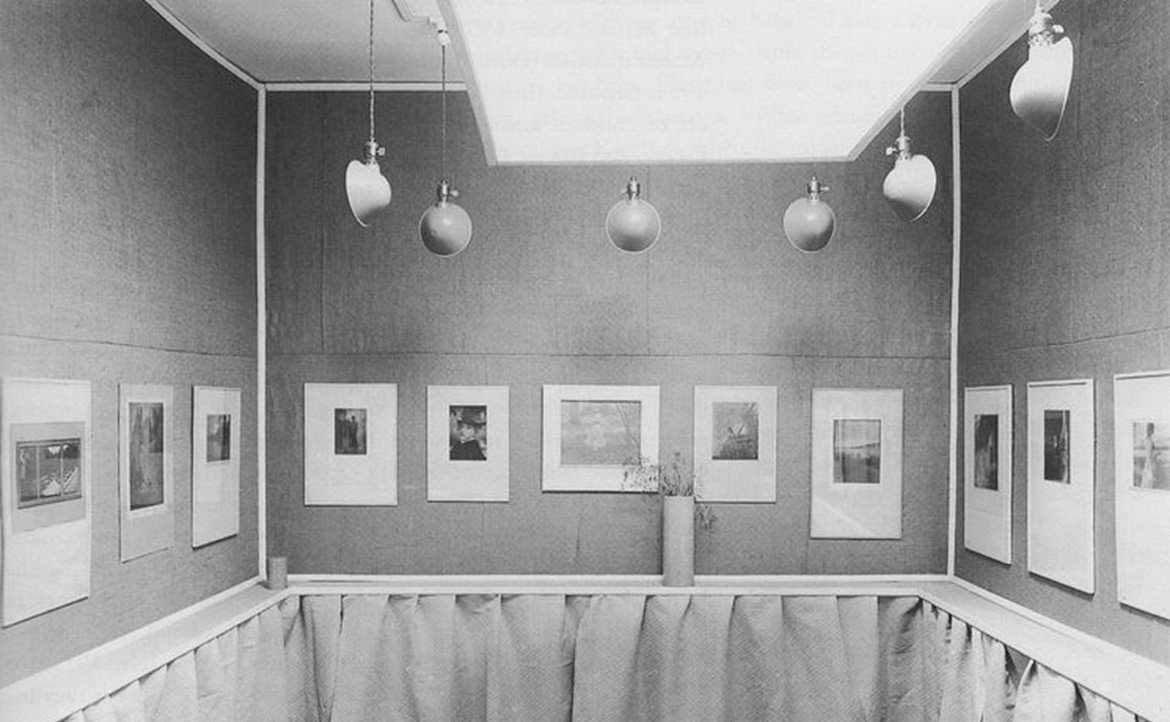Little Galleries of the Photo-Secession/291
Oct 19, 2022

In recognition of Open House New York’s 20th anniversary weekend on October 21-23, 2022, the Flatiron NoMad Partnership honors this year’s celebration of past and present places with a look back at the iconic Little Galleries of the Photo-Secession. The gallery was nicknamed “291” after its Fifth Avenue address, which was located between 30th and 31st Streets. First-ever exhibits of African, European, and U.S. artists were introduced at the gallery that was once owned and operated by noted Flatiron Building photographer, Alfred Stieglitz, from 1905-1917.
The Flatiron, 1903 is one of Stieglitz’s most memorable photographs of the 22-story structure during a snow storm. “I stood spellbound as I saw that building in that storm,” he once recalled. “I had watched the building in the course of its erection, but somehow it had never occurred to me to photograph it in the stages of its evolution. But that particular snowy day, with the trees of Madison Square all covered with snow, fresh snow, I suddenly saw the Flatiron Building as I had never seen it before. It looked, from where I stood, as if it were moving toward me like the bow of a monster ocean steamer, a picture of the new America which was in the making.”
But at the height of his photography career, Stieglitz decided to shift his focus. He began to pursue art promotion as a profession. In 1902, he founded Photo-Secession, a group of photographers who were advocates for the acceptance of their craft as a form of fine art. “The Photo-Secessionists wanted to move away from the old photographic ideal of accurately representing the world, towards a ‘painterly’ approach to photographic image making,” writes artspace.com. Their techniques included the use of special filters, soft focus, and sepia toning. One of the movement’s members, Edward Steichen, who was also a Stieglitz protégé, had encouraged the photographer to open a gallery to showcase Photo-Secession works. Steichen had a studio at 291 Fifth Avenue and knew about the availability of space in the building.
Stieglitz stated that he “liked the idea, being eager that New York should see both what we were doing and outstanding prints from other countries, hung in suitable manner and surroundings,” according to The Collection of Alfred Stieglitz: Fifty Pioneers of Modern Photography by Weston J. Naef. The photographer then “signed a one-year lease for the rooms at fifty dollars a month. The cost of installing electric fixtures and having the necessary carpentry done was no more than three hundred dollars.” The gallery’s first exhibition on November 21, 1905 would be a display of 100 photographs by 39 Photo-Secession photographers.
By 1909, however, Stieglitz “began to promote progressive art in a variety of media, and the work of painters, sculptors, and printmakers almost usurped the gallery space,” writes britannica.com. “These exhibitions included the first shows in the United States of the work of Henri Matisse, Henri de Toulouse-Lautrec, Paul Cézanne, and Pablo Picasso.” And, notes nga.gov, the National Gallery of Art’s website, Stieglitz also presented the first exhibit anywhere of African sculptures by 19th and early 20th century artists from the Ivory Coast and Gabon.
The U.S. artists that the gallery showcased included Georgia O’Keeffe, a once aspiring art student “among the 50,000 who filed through 291,” notes medium.com. O’Keeffe would later become known for her portraits of oversized flowers and New Mexican landscapes, as well as a muse in Stieglitz photographs and his second wife in 1924. Stieglitz’s “serial portrait of O’Keeffe” over a 20-year period, writes britannica.com, featured “more than 300 individual pictures and remains unique and compelling in its ability to capture many facets of a single subject.”
Initially, Stieglitz displayed O’Keeffe’s drawings in a 291 group show in 1916, then in a one-person presentation the following year. But in April 1917, O’Keeffe’s artistic installation would be the last one to appear at the gallery. Declining attendance, the ongoing World War I conflict, and Stieglitz’s “financial woes” and “uncertainty about his role in promoting modern art,” notes metmuseum.org, led 291 to close in June 1917 and the building would later undergo demolition.
At this time, Stieglitz also ceased publication of Camera Work, his quarterly magazine that contained 291 exhibit reviews. He once asked its readers ‘What is 291?’ And according to the Art Institute of Chicago’s website artic.edu, 65 “artists, critics, and collectors sent in their responses in poetry and prose. A representative reply came from photographer Francis Bruguière, who wrote, ‘If you go there often enough, you will find just how big or how small you are. Sometimes the awakening comes as a shock. But after all, it is an oasis in the desert of American ideas.’”
Header & Thumbnail Photo Credit: Exhibition at the Little Galleries of the Photo-Secession via Widewalls Magazine







